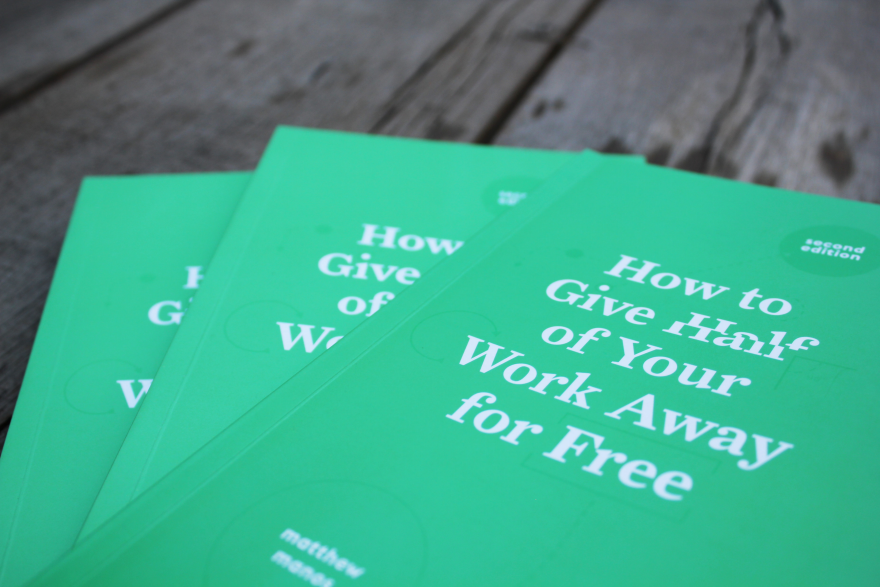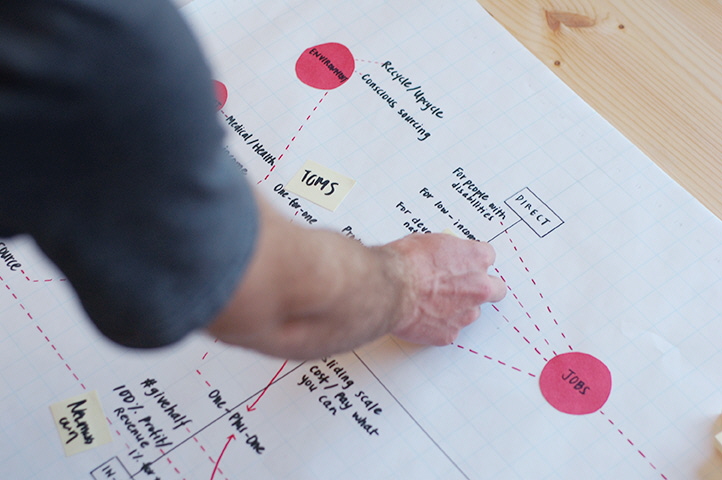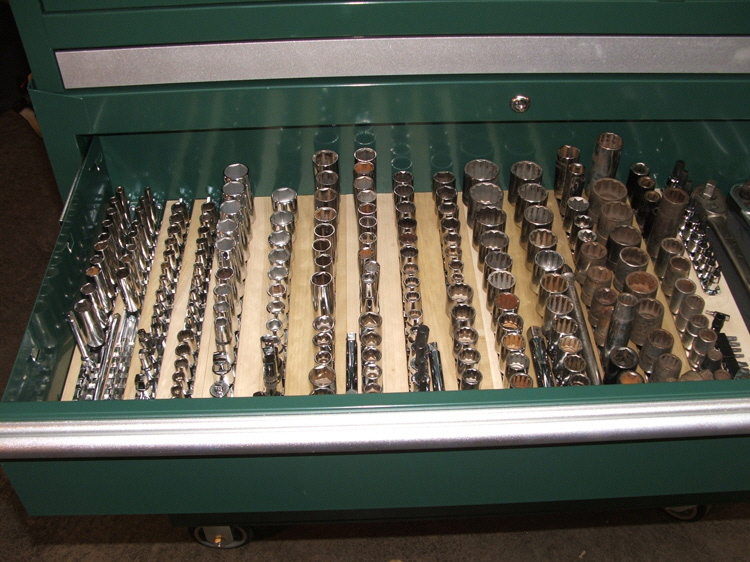Brand new Hand-Eye bandanas have arrived! To get their just-right blend of old school practicality and contemporary fun we enlisted the help of Nathan Yoder. Nathan is an illustrator, hand-letterer and graphic designer currently based in Portland. His distinctive work ranges from bite sized visual bon mots to short stories, all with a heavy focus on physical processes and traditional skills. We sat down with him to chat about his background and methods.
HES: How would you describe what you do?
NY: I'm an illustrator and designer trying to work on paper as much as I can. Whether it's going to be a t-shirt or logo I'm still illustrating the design, whether it be the type or whole layout, I'm doing my best to draw that out on paper. The older I get the less I think of art and design as an end instead of a means to an end. To be an amazing designer was a thing I was striving for, and now it's more about how to connect with people, or the cliche 'how to tell a story' stuff. How to help people connect with what they're happy and passionate about. I hope that my passions get other people excited about their passions. Recently it's been more about connecting with the artistic side of things and a little less about the controlling design side of things, but definitely keeping design in the back of my head.
Why work by hand?
When I started drawing that was my first big love, and when I started design school drawing was still a big part of it. For the first few semesters they wouldn't let us even touch a computer, so it was still feeding that by-hand part of me. But the deeper into school the more we got into the creative suite stuff, and after school I got a job at a smaller agency and there wasn't really time for illustration any more. I hadn't been drawing in a style that was characteristic of me, so I wasn't really working fast enough to crank something out by hand at that time at the agency, so it just wasn't practical to pay me to illustrate things. But the more I worked on the computer the more I felt disconnected from my work. I was just handing off digital files all day, and could never see a tangible result of all my hours of labor. I started getting bored and burned out a bit, and started doodling at work, that's when this whole thing I'm doing now started.
![]()
Everybody knows limitations help with certain kinds of processes, but being confronted by that lack of an Undo function, especially when you've been immersed in that for work, seems like switching between the two would be uncomfortable.
The thing is with computers is that you almost get super powers. All of a sudden once you're a superhero nothing's fun any more. You can fly and go underwater and do all this stuff, and you'd think that would be freeing. But I've found that it's more freeing when I realize my limitations and begin to understand that all these things that I can do, but moreso all these things that I *can't* do, are allowing me to be myself on paper. That's where doodling at the beginning was such a release for me. I was drawing strictly out of frustration and boredom and that's when people really started to take notice - as soon as I stopped trying to be noticed!
You talk about emphasizing process and being aware of the journey. At what point did that start being a key value?
I grew up in Oklahoma, and in 2013 I moved away and got a job doing illustration and lettering at a company in California. Just before all that happened was the time I'd started drawing and posting my hand done stuff online. I'd been talking to my dad about Life Stuff, and he was giving me the typical dad talk - "Son, you need a vision for your life!" And I was like "Uh, how do you get a vision?" That's such a broad thing.
Especially for young people! Vision, right. Based on… my years in school?
Right. So that was bouncing around in my head. Around that time I read a book by Simon Sinek called Start With Why, more of a businessy book, and I felt like I was getting more out of it on a personal level. The idea is if you're a company, figure out why you're doing what you're doing instead of preaching about all the little details and specs on your product and hoping that sells your product, when really the question is why is this [product] relevant to your life. For me, yes I love art and drawing, but those are just the "specs." Why am I actually drawing? If art was out of the picture and for whatever reason I couldn't draw any more, I still felt like there was something there I was passionate about.
After some digging I figured out that the thing that truly gets me excited, whether through art or just a conversation, is if I can help somebody see the thing they're excited about. The whole thing behind "Enjoy The Process" was this concept [that] too many people get caught up in an idea of what is going to be "success" for them. I don't think it's all bad, but in the broad sense people are using "success" as an attainable thing, that you can *have*. I think that's a little bit dangerous, not to use this as an excuse to not work hard, but if you have something that says "THIS is success for me" it puts all the power in your hands to say that you can make that happen. But I think it can create a lot of anxieties and fears, especially if you don't make it a few times, that can hinder your excitement about moving forward.
Depending on your personality, you might say "Ok that was a mistake and I can move forward," but if you're somebody who's really emotionally invested in your work it can be really detrimental and kill your momentum. I think "Vision" is a better way of putting it, looking down the road where I want to go, instead of the mountain at the end of the road being the only marker of success.
I don't ever plan on getting to that thing and wrapping my hands around it and saying I've succeeded, I just want to be going in that direction. Once you're ok with that, just heading in that direction, you can enjoy the ride of getting there. Enjoyment in whatever you're doing will only come when you take your eyes off yourself a little bit, see what the work is [you're] doing right now, what tools are in your hands, instead of being so bummed that you haven't reached your goal that you can't function. More of a motorcycle ride and less of a minivan-wish-I-was-there idea.
You do several types of work, from your hand lettering to writing and publishing. Do you have a favorite, or most intriguing kind of project?
I haven't done a lot of this yet, but I did a little zine a while back that had a bunch of illustrations but also short stories and articles mixed in with the artwork. That was really fun because I've always had my hand in a lot of things. Growing up I worked in motion graphics, and I was always making stupid movies with friends, and I like to play drums… Drawing is the one thing I've told myself to focus on and get better, instead of being mediocre at a bunch of things. Writing is the only other thing that's close enough to my artwork that I can invest enough time in to someday be decent at, and hopefully tie those together. Maybe in a kid's book? I also really enjoy a good editorial project, where I can take an article or story and get the abstract thought into an illustration. It's like making a logo for a story, since a logo is trying to fit a whole business in a single mark.
Where do you normally work?
I call it my "studio" but it's my apartment. I'll step out to coffee shops. My roommate Sam Larson does lots of pen and ink illustration stuff too, so it's basically a studio with bedrooms in it, since we're there working all day.
What makes for a good work environment?
Anywhere as long as it has a drafting table... preferably some hardwood floors?
You have a lot of traditional typography in your portfolio. What attracted you to that?
It's almost a natural tendency after looking at a craft like type structure, or where our alphabet came from. If you're going to make your work make sense you have to go back to where it started and understand why things are working the way they're working in order to really connect with it later on. Most people don't know the history of design but they've seen the progression, so if something isn't designed with history in mind they can see that something is off, they can't explain why but they know. When I started working on paper more it's like I was compelled to know where all that stuff was coming from so I could do it correctly. Naturally as you start to learn all the things about hand lettering and how it was originally done, you build a respect for it.
You also do a lot of traditional flash and small drawings. Is that a similar attraction?
Yes. That specifically has been a funny deal. It's subject matter that I was drawing as doodles for a long time without shading. I've always been impressed by traditional flash tattoo artists and the shading in their work, and one night I sat down and decided to put some watercolor to some of my linework. I really liked the look of it but it takes a lot to sit down and get out watercolors so I don't do it much, but I wanted a way to make it more accessible. So one trip back to Oklahoma visiting family, I was sitting at the table with one of my sisters and had a Sharpie that I always have and a ballpoint pen on the table. I'd drawn out a few quick illustrations, and then started tapping to do some more stippling type work to add shading to the linework. I still have that piece of paper with that initial type of flash stuff! By no means am I claiming it as an original idea or something that isn't heavily influenced by tattoo work. But it's fun to play with on paper, since I've never tattooed in my life. I don't know if it'll be anything really.
![]()
Have people had your work tattooed?
Yeah, I've had some people tag me in some shots. That's cool, because again it's all inspired by tattoo stuff. That's what I'm curious about. If I were to talk to a tattoo artist would they say "You're doing this wrong, and this wrong!"? It's cool to see how it transfers. Linework is such a big thing, especially with traditional work.
That sounds exactly like the attraction to simplicity and constraint that you're using in your other lettering and illustration.
Totally! A lot of tattoo artists, especially the traditional guys, are really incredible designers and their medium just happens to be tattooing. If you're going to do tattoo work in a traditional style, and it's going to hold up and the lines aren't going to bleed together, then you have to have a bold line, which requires simpler line work… and it is really constraining! After a while those guys are basically just designing flowers and faces, rather than drawing faces and flowers. It's something I really love about it. It is like building a logo version of things.
What do you think is important to have in a creative community?
As broad as it is, just… people. In community in general, I'm inspired by everyday people. Just like I try not to have too many [expectations] about my workspace, I try not to have too many [expectations] about the company I keep. I don't consider my friends only by what their skills and portfolios are. "Oh, you're just a nurse? You can't be my friend because I'm a Creative Person." Human expression is art! We label art as music and painting and illustration, but that's just one version of human expression. When I see anybody, a construction worker or a doctor, sitting down and passionately explaining what they do, that's what I want.
When I'm looking for a creative community, yes, there are personalities that specifically cater to a stereotypical creative person's workflow and lifestyle, and that's inspiring and we all need friends with common interests that inspire us in those shared interests. But if you have an open mind you can find yourself inspired by people outside of your common interests. As long as we get along and they can laugh at *some* of my jokes… that's it.
'I don't care what you think of my art, but if you don't like my jokes this isn't going to work.'
Yeah! That's one of the biggest things! Keeping humor involved, and being excited. It doesn't have to just be art. I want people that are excited about life.
You can see more of Nathan's portfolio online, follow his projects on Instagram, and pick up the Hand Eye x Nathan Yoder bandana for just $22.
![]()






































































